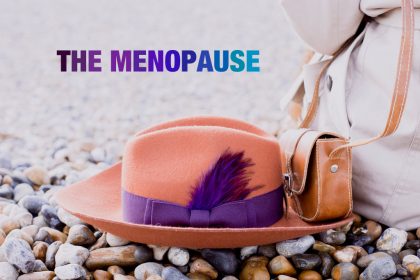What is HRT and how can it help women suffering from menopause or perimenopause symptoms?
Wondering whether HRT may be for you? Find out what signs to look out for, and how it can help with menopause or perimenopause symptoms.
Hormone Replacement Therapy (HRT) is a treatment that helps women suffering from symptoms of both menopause and perimenopause.
However, despite this treatment being made available in the 90s, there are only an estimated one million women using HRT to reduce their symptoms.
Whilst this may seem like a large portion of women, the NHS estimates there are currently around 13 million women who are presently menopausal or perimenopausal. This means that 12 in 13 women suffering from these conditions are not using HRT.
To provide more information, women’s health experts at Forth have created an informative guide to HRT. Their aim is to supply relevant details on the treatment and how it could potentially help sufferers of menopausal symptoms.
Symptoms to look out for before starting HRT
Women are advised to begin HRT as soon as symptoms begin. The use of hormone replacement therapy can not only reduce symptoms, but can diminish the risk of developing conditions such as cardiovascular and coronary heart disease.
Regardless, it can be difficult for women to understand when they are suffering symptoms due to the natural nature of some of the signs, especially if women aren’t anticipating these changes.
Common symptoms of perimenopause and menopause that women should look out for before considering HRT treatment include hot flushes, memory loss and mood changes. (You can also read some of the less common symptoms you need to be aware of here.)
Doctors advise that the benefits of the remedy won’t be felt right away. The general expected length of time needed before the treatment takes full effect is around three months.
Dosage of the drug can also vary from person to person and this can be discussed in greater detail with a GP or health expert to ensure you’re prescribed the relevant dose for treatment.
The benefits of HRT
HRT provides a wealth of benefits to women suffering intense symptoms of menopause. The therapy is used to regulate declining levels of oestrogen and progesterone, but the additional benefits of the treatment often go unnoticed.
Some of the additional advantages of HRT include:
- Prevention of heart disease: Recent research revealed HRT users were 30% less likely to die from cardiovascular diseases such as diabetes or high blood pressure.
- Regulation of symptoms: HRT can reduce the symptoms faced by menopause and perimenopause sufferers.
- Minimises risk of specific cancers: As well as protecting against heart disease, HRT is known to minimise the risk of developing certain cancers. This includes protection against developing colorectal and endometrial cancers.
Another minor benefit is the risk of fragile bone fractures is greatly reduced when taking hormone replacement therapy. However, this only lasts as long as the treatment is being taken.
The side effects of HRT
Like any drug or treatment, there are side effects to expect when taking hormone replacements. These side effects can differ and will reduce with time.
Some of the main side effects HRT users can expect at the beginning of treatment are:
- Acne
- Depression
- Headaches
- Abnormal pain
- Bloating
- Mood swings
It’s advised that women who suffer from vaginal bleeding for more than six months after beginning HRT should seek consultation with their GP. Combined HRT may also slightly raise the risk of developing breast cancer.
A BMJ study revealed that there were an additional 9 in 10,000 cases of blood clots amongst women taking the treatment compared to those not on HRT.
The different types of HRT
While the overall effect of HRT remains the same, the methods of taking the hormones can range. The two hormones in the drug are oestrogen and progesterone. These are used to directly combat depleting levels of these hormones during menopause.
For women who have previously had a hysterectomy, oestrogen-only treatment is advised.
The most common ways of consuming the hormones are in tablet form, transdermally and through the use of creams.
Creams are oestrogen-only and would reduce some symptoms, but for further protection, combined HRT can be taken as tablets or transdermally.
There are also two programs for taking HRT:
- Sequential HRT: Daily intake of oestrogen with progesterone to be taken for the first 12 days of each month.
- Continuous HRT: Daily intake of both oestrogen and progesterone.
We hope this article has helped educate you further on the types of hormone replacement therapy as well as the benefits and side effects to be aware of. If you’re still unsure if HRT could be helpful for you please seek a consultation with your GP.
Read more about the menopause
If you’d like to learn more about the menopause and perimenopause we recommend reading these articles:
- What to eat to reduce your menopause symptoms
- Eight ways you can make the most of the menopause
- 11 of the most frequently asked questions about the menopause – answered by a gynaecologist
- How the menopause affects women’s sleep – and five tips to help you
Photo by Ruben Ramirez










